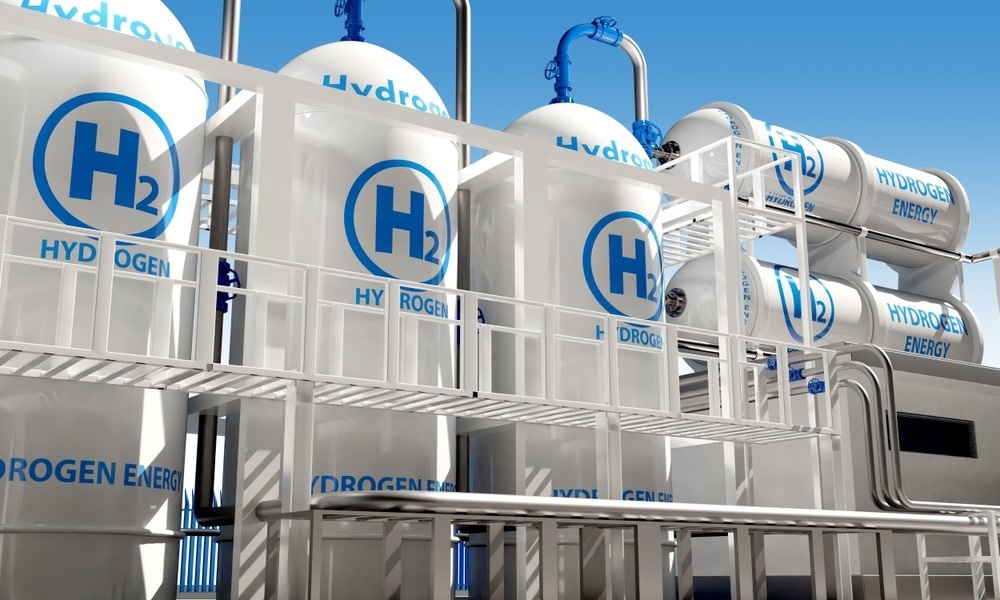Learn more about the role low-carbon nanomaterials could play in advancing the renewable energy sector through recent research and commercial activity.
Image Credit: Aleksandar Malivuk/Shutterstock.com
What Are Low-Carbon Nanomaterials?
Low-dimensional allotropes of carbon or low-carbon nanomaterials consist mainly or solely of carbon, possess extraordinary physical properties and can be zero-dimensional (0D) like carbon nanodots, one-dimensional (1D) like carbon nanotubes and, two-dimensional (2D) like graphene nanosheets.3
For instance, graphene, a single layer of carbon atoms arranged in a two-dimensional hexagonal lattice, is a low-carbon nanomaterial gaining significant attention due to its remarkable electrical conductivity, mechanical strength, and thermal properties. Similarly, another low-carbon nanomaterial is carbon nanotubes (CNTs), which are cylindrical structures composed of carbon atoms arranged in hexagonal patterns.
Why Are Low-Carbon Nanomaterials Relevant to the Renewable Energy?
Low-carbon nanomaterials are relevant to the renewable energy industry due to their exceptional properties that can address key challenges in this domain. For instance, carbon nanotubes and graphene-based materials can enhance the performance of batteries and supercapacitors since their high electrical conductivity and large surface area enable faster charge rates, improving the overall efficiency of energy storage systems.2
Similarly, with its excellent light-absorbing properties, graphene can enhance the conductivity of charge carriers in solar cells. Additionally, the flexibility of some nanomaterials allows lightweight and flexible solar panels, expanding the possibilities for renewable energy integration.7
Commercial Activity
Samsung Groundbreaking Milestone in Graphene Research
Several companies have recognized the potential of low-carbon nanomaterials and are investing in their development for commercial applications. For instance, in 2014, Samsung Electronics achieved a groundbreaking milestone in graphene research, unveiling a novel synthesis method developed in collaboration with Sungkyunkwan University. This method facilitated the large-scale production of single-crystal wafer graphene on a semiconductor, maintaining superior electrical and mechanical properties.
Graphene, with electron mobility surpassing silicon by a factor of 100, emerged as a durable, heat-conductive, and flexible material. Positioned for integration into flexible displays, wearables, and future electronic devices, this discovery marked a significant leap in consumer electronics technology.6
Nanocyl
Nanocyl is another player in carbon nanotube (
Recent Research
Greener Future of Electronic Devices
In a recent study, researchers discuss the transformative impact of one-dimensional and two-dimensional nanomaterials on electronic devices, particularly carbon nanotubes and graphene. These materials, known for their large surface area, superior electrical conductivity, and mechanical strength, contribute to the evolution of flexible, lightweight, and durable electronic devices.
The study highlights advancements in applying these low-carbon nanomaterials in creating innovative configurations for various electronic devices. The focus of the study extends to flexible sensors with applications in healthcare, environmental monitoring, and biomedical engineering, showcasing the potential for greener and more sustainable technologies and opening possibilities for foldable display boards, flexible smartphones, and wearable biomedical devices.1

Image Credit: FOTOGRIN/Shutterstock.com
Innovative Hydrogen Evolution with Low-Carbon Nanomaterials
In a recent study, researchers explored the potential of low-carbon nanomaterials as catalysts for the hydrogen evolution reaction (HER). They introduced a novel concept of a virtual interface formed by the sp2 and sp3 orbitals of carbon, activated through the partial hydrogenation of low-dimensional carbon materials like C60, carbon nanotubes (CNTs), and graphene using density functional theory (DFT) calculations. This hydrogenation-induced interface created active sites for HER, with performance comparable to commercial Pt/C catalysts.
The study demonstrated that the strategic partial hydrogenation of these carbon materials could enhance their electronic conductivity and serve as a simple yet effective approach to designing catalysts for sustainable hydrogen production. This breakthrough offers a promising avenue for developing cost-effective and efficient catalysts, contributing to the broader adoption of greener energy technologies.8
Challenges
Upscaling and industrial-scale manufacturing of low-carbon nanomaterials pose a significant challenge to cost-effectiveness since it will require upgrading current manufacturing techniques and developing new technologies and processes that are cost-effective and scalable.
The environmental impact of manufacturing low-carbon nanomaterials is another challenge since certain production methods may involve energy-intensive processes and hazardous chemical usage. For instance, one study discusses the impact of carbon nanotubes, graphene, and fullerene (C60) on the environment due to their small size and resistance to degradation, posing risks to ecosystems.
The potential health and safety risks associated with inhaling or ingesting nanomaterials are also a concern. However, with ongoing research, it is expected that these challenges will soon be tackled.5
Conclusion
In conclusion, the potential of low-carbon nanomaterials for a greener tomorrow is evident through their application in renewable energy and electronic devices. Commercial efforts, exemplified by Samsung and Nanocyl, underscore the growing recognition of their significance.
Recent research showcases their role in innovative configurations, including flexible sensors and catalysts for hydrogen evolution. However, challenges such as cost-effectiveness and environmental impact must be addressed for widespread adoption. With ongoing research, it is anticipated that solutions will emerge, paving the way for a sustainable and eco-friendly energy future.
See More: Can Boron Nitride Solve Hydrogen’s Energy Storage Challenge?
References and Further Reading
Das, C. M., Kang, L., Ouyang, Q., & Yong, K. T. (2020). Advanced low‐dimensional carbon materials for flexible devices. InfoMat. https://doi.org/10.1002/inf2.12073
El-Kady, M. F., Shao, Y., & Kaner, R. B. (2016). Graphene for batteries, supercapacitors and beyond. Nature Reviews Materials. https://doi.org/10.1038/natrevmats.2016.33
Mahto, R. K., Kumar, S., Mahto, R. K., & Kumar, S. (2022). Synthesis and Characterization of Low Dimensional Structure of Carbon Nanotubes. Int. J. Sci. Res. Arch. https://doi.org/10.30574/ijsra.2022.7.2.0291
Nanocyl. https://www.nanocyl.com/
Peng, Z., Liu, X., Zhang, W., Zeng, Z., Liu, Z., Zhang, C., … & Yuan, X. (2020). Advances in the application, toxicity and degradation of carbon nanomaterials in environment: A review. Environment international. https://doi.org/10.1016/j.envint.2019.105298
Samsung Newsroom (2014) Samsung Electronics Discovers Groundbreaking Method to Commercialize New Material for Electronics. https://news.samsung.com/global/35576
Shin, D. H., & Choi, S. H. (2018). Use of graphene for solar cells. Journal of the Korean Physical Society. https://doi.org/10.3938/jkps.72.1442
Yin, H., & Du, A. (2023). Activating the hydrogen evolution reaction in low-dimensional carbon by partial hydrogenation: Role of the hybrid sp2-sp3 orbital interface. ChemPhysMater. https://doi.org/10.1016/j.chphma.2022.12.001


